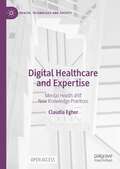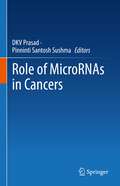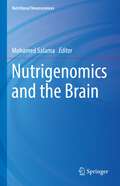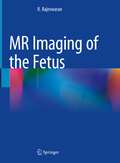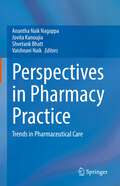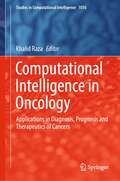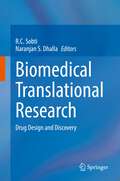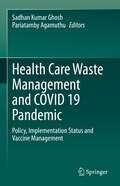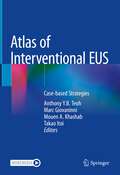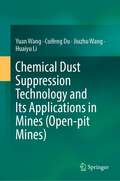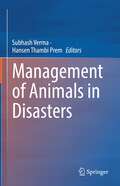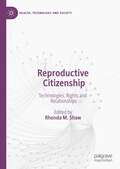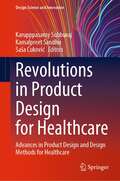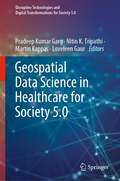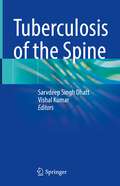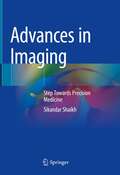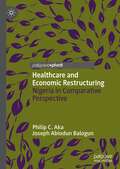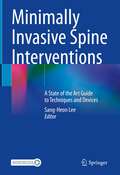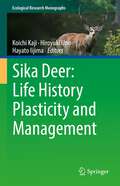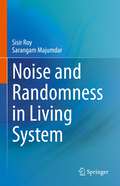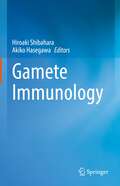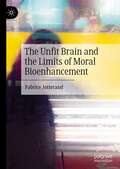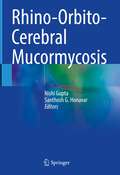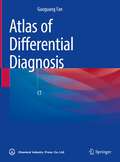- Table View
- List View
Digital Healthcare and Expertise: Mental Health and New Knowledge Practices (Health, Technology and Society)
by Claudia EgherThis open access book explores how expertise about bipolar disorder is performed on American and French digital platforms by combining insights from STS, medical sociology and media studies. It addresses topical questions, including: How do different stakeholders engage with online technologies to perform expertise about bipolar disorder? How does the use of the internet for processes of knowledge evaluation and production allow for people diagnosed with bipolar disorder to reposition themselves in relation to medical professionals? How do cultural markers shape the online performance of expertise about bipolar disorder? And what individualizing or collectivity-generating effects does the internet have in relation to the performance of expertise? The book constitutes a critical and nuanced intervention into dominant discourses which approach the internet either as a quick technological fix or as a postmodern version of Pandora’s box, sowing distrust among people and threatening unified conceptualizations and organized forms of knowledge.
Role of MicroRNAs in Cancers
by Dkv Prasad Pinninti Santosh SushmaThis book discusses the potential roles of miRNA as a crucial regulator in cancer biology. It examines the regulation of drug resistance by miRNAs in cancers and the mechanism of their deregulated expression. The book discusses the role and molecular mechanism of miRNA in regulating cellular proliferation and cell cycle. It analyses circulating miRNAs as biomarkers for cancer diagnosis and prognosis. It also analyzes the role of miRNA as a modulator of the development and function of tumor-associated immune cells. It explores the cross-talk between miRNA and reactive oxygen species (ROS) in pathogenesis, cancer therapeutic tolerance, and resistance. It provides insights into the role of miRNA in cancer angiogenesis, metastasis and describes strategies and associated challenges of miRNA-based therapies.
Nanotechnology for Infectious Diseases
by Saif Hameed Suriya RehmanThis book aims to cover the applications of nanotechnology against human infectious diseases. The chapters of the book discuss the role of nanotechnology in the efficient diagnosis and treatment of these diseases. It explicitly provides an overview of nanodiagnostics for infectious diseases from nanoparticles-based, nanodevice-based, and point-of-care platforms. The book also covers the state-of-the-art review of recent progress in biomimetic and bioengineered nanotherapies to treat infectious diseases. It also presents a nano carrier-based CRISPR/Cas9 delivery system for gene editing and its applications for developing interventional approaches against communicable diseases. Further, it reviews the recent developments in nanotechnology to engineer nanoparticles with desired physicochemical properties as a line of defense against multi-drug resistance micro-organisms. Cutting across the disciplines, this book serves as a guide for researchers in biotechnology, parasitology, and nanotechnology.
Nutrigenomics and the Brain (Nutritional Neurosciences)
by Mohamed SalamaDr. Mohammed Salama is Atlantic senior fellow for Equity in brain health at the Global Brain Health Institute (GBHI) and Associate professor at the Institute of Global Health and Human Ecology at the American University in Cairo (AUC). He established the first Translational Neuroscience Unit in Egypt. Mohamed’s collaborative research led to establishing the Egyptian Network for Neurodegenerative Disorders Mohamed was selected as a SOT Global Senior Scholar in 2013 and Translational/bridging awardee in 2016. He was awarded by Parkinson’s and Movement Disorders Foundation (PMDF) for his continued research in neurodegeneration. Recently, Mohamed and his colleagues succeeded in drafting the first Reference Egyptian Genome and collaborating with other colleagues to start a national cohort (A Longitudinal Study of Egyptian Health Aging [AL-SEHA]).
MR Imaging of the Fetus
by R. RajeswaranThis book presents the anatomy and MRI features of the normal fetus and describes the anomalies of each system in a systematic way. The normal fetal brain at different gestational ages is also extensively illustrated. It features a treasure of MR images illustrating several clinical conditions. Sonographic images, line diagrams and post-natal images are supplemented for easy learning. It also addresses the differential diagnoses and prognostic indicators of the various fetal anomalies.This book will help the consultants and postgraduates of radiology, obstetrics, fetal medicine and pediatrics in understanding various fetal anomalies and in patient counseling.
Perspectives in Pharmacy Practice: Trends in Pharmaceutical Care
by Anantha Naik Nagappa Jovita Kanoujia Shvetank Bhatt Vaishnavi NaikThis comprehensive text provides information on fundamental principles of clinical practice and how these can be implemented to provide excellent treatment to the patients. The triads of health care delivery include Physicians, Pharmacist and Nurses that have distinct roles and responsibilities of patient care. Effective pharmacy practice requires an understanding of the social context within which pharmacy is practiced, recognizing the particular needs and circumstances of the users of pharmaceutical services and of pharmacy's place within health service provision. This book presents a contemporary view of pharmacy practice research covering theories, methodologies, models and techniques that are applicable. The initial chapters describe the basics of pharmacy profession and what is the key role and responsibilities of Pharmacist in health care delivery. The central part of the book illustrates the community, hospital and ethics regarding drug formulation. The last chapters cover the therapeutic aspect of pharmacy and how these can be employed to improve patient’s health care facilities.
Computational Intelligence in Oncology: Applications in Diagnosis, Prognosis and Therapeutics of Cancers (Studies in Computational Intelligence #1016)
by Khalid RazaThis book encapsulates recent applications of CI methods in the field of computational oncology, especially cancer diagnosis, prognosis, and its optimized therapeutics. The cancer has been known as a heterogeneous disease categorized in several different subtypes. According to WHO’s recent report, cancer is a leading cause of death worldwide, accounting for over 10 million deaths in the year 2020. Therefore, its early diagnosis, prognosis, and classification to a subtype have become necessary as it facilitates the subsequent clinical management and therapeutics plan. Computational intelligence (CI) methods, including artificial neural networks (ANNs), fuzzy logic, evolutionary computations, various machine learning and deep learning, and nature-inspired algorithms, have been widely utilized in various aspects of oncology research, viz. diagnosis, prognosis, therapeutics, and optimized clinical management. Appreciable progress has been made toward the understanding the hallmarks of cancer development, progression, and its effective therapeutics. However, notwithstanding the extrinsic and intrinsic factors which lead to drastic increment in incidence cases, the detection, diagnosis, prognosis, and therapeutics remain an apex challenge for the medical fraternity. With the advent in CI-based approaches, including nature-inspired techniques, and availability of clinical data from various high-throughput experiments, medical consultants, researchers, and oncologists have seen a hope to devise and employ CI in various aspects of oncology. The main aim of the book is to occupy state-of-the-art applications of CI methods which have been derived from core computer sciences to back medical oncology. This edited book covers artificial neural networks, fuzzy logic and fuzzy inference systems, evolutionary algorithms, various nature-inspired algorithms, and hybrid intelligent systems which are widely appreciated for the diagnosis, prognosis, and optimization of therapeutics of various cancers. Besides, this book also covers multi-omics exploration, gene expression analysis, gene signature identification of cancers, genomic characterization of tumors, anti-cancer drug design and discovery, drug response prediction by means of CI, and applications of IoT, IoMT, and blockchain technology in cancer research.
Biomedical Translational Research: Drug Design and Discovery
by R. C. Sobti Naranjan S. DhallaThis book, which is the third volume of Biomedical translational research, focuses on the fundamental role of biomedical research in developing new medicinal products. It emphasizes the importance of understanding biological and pathophysiological mechanisms underlying the disease to discover and develop new biological agents. The book uniquely explores the genomic computational integrative approach for drug repositioning. Further, it discusses the health benefits of nutraceuticals and their application in human diseases. Further, the book comprehensively reviews different computational approaches that employ GWAS data to guide drug repositioning. Finally, it summarizes the major challenges in drug development and the strategies for the rational design of the next generation more effective but less toxic therapeutic agents.
Health Care Waste Management and COVID 19 Pandemic: Policy, Implementation Status and Vaccine Management
by Sadhan Kumar Ghosh Pariatamby AgamuthuThis book deals with the general principles, policy instruments, sustainability of supply chain, and business of health-care waste (HCW) management including inputs on exercise in immune health defense against COVID 19. Health-care waste management is very important in any country for protection of environmental and animal and human health. The COVID-19 pandemic, in addition, has augmented this importance to a greater extent. Italy has been successful in curbing the problems related to HCW management during the COVID-19 pandemic at very fast rates from the worst situation, while for a few countries in Asia and Africa, challenges still exist. It is necessary that policy makers, researchers, and implementers gain more knowledge and information on these aspects and improve the strategies and actions. Addressing these issues will reduce the cost of health care as well as resource inefficiency hindering sustainable development goals. This book is of interest and useful to practitioners, capacity builders and policy makers, entrepreneurs, NGOs, and general people, and is a valuable source of reference to the relevant researchers and students in global markets. The book serves as a reading material for undergraduate and graduate students of environmental science, waste management, and medical science. National and international scientists as well as policy makers will also find this to be a useful read.
Atlas of Interventional EUS: Case-based Strategies
by Anthony Y. B. Teoh Marc Giovaninni Mouen A. Khashab Takao ItoiThis atlas aims to systematically provide a case-by-case discussion on selected interventional endoscopic ultrasonography (EUS) procedures and how to approach such procedures on different patients. The atlas offers illustrations of the interventional procedures and several cases of the procedures are included. Within each case, a standardized report is provided including a brief history, imaging findings, a detailed discussion on treatment options, considerations in the EUS intervention, how to perform the procedures and final outcomes. EUS-guided drainages of the bile duct, pancreatic duct, gallbladder and abscesses are summarized. Ablative procedures including celiac plexus, pancreatic cyst and radiofrequency ablations are also covered. Other procedures guided by EUS, including gastroenterostomy, injected therapy, iodine beads insertion and fiducial marker insertion and endovascular interventions are further demonstrated. Gastroenterologists and surgeons can benefit from this atlas on learning strategies and preparing for these procedures.
Chemical Dust Suppression Technology and Its Applications in Mines (Open-pit Mines)
by Yuan Wang Cuifeng Du Jiuzhu Wang Huaiyu LiThis book focuses on the study of chemical dust suppression in mine dust pollution control by means of theories, experiments, computer simulation, and case application, aiming at providing chemical dust suppression solutions for mining worksites. It has seven chapters, including the following contents: (1) introduces fundamental theories and applications of chemical dust suppression, analyzes the dust source intensity of worksites and the mechanisms of dust generation, and summarizes the dust control measures for different mining worksites. (2) According to the mechanisms of dust generation in different mining worksites, targeted dust suppressants were developed. Through optimization by monomer experiment and orthogonal experiment, the optimum formula of different types of dust suppressants was obtained, and its properties were characterized. (3) The dust suppressant field application process was introduced, and the economic benefits were analyzed. This book is expected to provide valuable references both for researchers and engineering technicians engaged in environmental engineering, safety engineering, occupational health, and mining metallurgical engineering, and it also serves as a textbook for graduate students in above disciplines.
Management of Animals in Disasters
by Subhash Verma Hansen Thambi PremThis book is a comprehensive guide for veterinary and humanitarian professionals to plan emergency responses for the care and welfare of animals. It covers various topics on disasters, such as principles of disaster management, operation planning, team deployment, etc., from the perspective of saving both livestock and the livelihood of vulnerable communities. The book also discusses the importance of early warning systems, biosecurity, techniques for data collection, one health approach, climate change, and appropriate mitigation strategies. It highlights different principles, approaches, and guidelines related to the rescue, relief, and management of animals during disasters. It also contains topics on the welfare of birds and the rescue and relief of wild animals. This book includes essential veterinary and life-saving supplies required by the relief providing teams during emergencies such as disasters. The book helps administrators understand the key aspects of welfare and management of animals during disasters and enable them to draft policies focusing on humans and animals’ rescue & welfare and protection of livelihoods. It is an essential guide for veterinarians, humanitarian workers, field functionaries, farmers, disaster response forces personnel, etc., during various types of disasters and emergencies.
Reproductive Citizenship: Technologies, Rights and Relationships (Health, Technology and Society)
by Rhonda M. ShawThis book addresses responses to the predicament of medical and social infertility. It draws on international research to examine the dimensions of reproductive citizenship in relation to decision-making about a range of issues: from fertility preservation and the desirability of family creation as a normative expectation of social participation, to how families manage and negotiate engagement with providers of reproductive materials and services around information disclosure and contact, and how they consider their social obligations and responsibilities in relation to the use of assisted reproductive technology (ART).
Revolutions in Product Design for Healthcare: Advances in Product Design and Design Methods for Healthcare (Design Science and Innovation)
by Karupppasamy Subburaj Kamalpreet Sandhu Saša ĆukovićThis book coherently presents advances in design principles, processes, and methods in healthcare product design. It captures the implications of technological advances on designing healthcare products especially when market and societal needs pull each other in opposite directions. The contents focus on innovative design thinking processes and methods in developing healthcare products, applications of digital technologies in healthcare product design, amalgamation of artificial intelligence and design thinking for healthcare product design and quality, sustainability, and regulatory aspects in the design process. This book is a useful reference for those in the industry and academia.
Geospatial Data Science in Healthcare for Society 5.0 (Disruptive Technologies and Digital Transformations for Society 5.0)
by Pradeep Kumar Garg Nitin K. Tripathi Martin Kappas Loveleen GaurThe book introduces a variety of latest techniques designed to represent, enhance, and empower multi-disciplinary approaches of geographic information system (GIS), artificial intelligence (AI), deep learning (DL), machine learning, and cloud computing research in healthcare. It provides a unique compendium of the current and emerging use of geospatial data for healthcare and reflects the diversity, complexity, and depth and breadth of this multi-disciplinary area. This book addresses various aspects of how smart healthcare devices can be used to detect and analyze diseases. Further, it describes various tools and techniques to evaluate the efficacy, suitability, and efficiency of geospatial data for health-related applications. It features illustrative case studies, including future applications and healthcare challenges. This book is beneficial for computer science and engineering students and researchers, medical professionals, and anyone interested in using geospatial data in healthcare. It is also intended for experts, offering them a valuable retrospective and a global vision for the future, as well as for non-experts who are curious to learn about this important subject. The book presents an effort to draw how we can build health-related applications using geospatial big data and their subsequent analysis.
Tuberculosis of the Spine
by Sarvdeep Singh Dhatt Vishal KumarThis book covers all aspects and dimensions of tuberculosis affecting the spine, starting from its historical perspective to modern trends in early diagnosis, management, and rehabilitation. This book is a treatise fulfilling all the existing wide lacunae in suspicion, clinical examination, diagnosis, and management of this disease which still dwells as a mystery in modern medicine. It presents very easy to follow management plan algorithms and keynotes for easy and ready reference in each chapter. It describes the recent advances in diagnostic modalities and the treatment regimes, along with controversies, that have been elucidated and concluded with firm and sound references from evidence-based literature. This book also showcases the varied presentations of the disease as per varied socio-economic strata and in different geographic regions along with the different, principle-based approach to the disease spectrum shall be discussed at length. It also includes different clinical settings and scenarios in the concerned chapters. This book is a ready reference guide for postgraduate trainees, post-doctoral trainees, and faculty and consultants of orthopedics and neurosurgery.
Advances in Imaging: Step Towards Precision Medicine
by Sikandar ShaikhThis book covers all the advances in the imaging and elaborates on their applications and advantages. It provides step by step overview of the various advanced imaging modalities like molecular imaging, nano imaging, robotic imaging, stem cell imaging, optical imaging, immunoimaging, etc. It describes the applications of various advanced imaging modalities in pathologies like oncology, infection and inflammation and other conditions and provides the available therapeutic options with the help of these modalities. It also covers the detailed aspects of various modalities like ultrasound, CT, MRI, PET-CT, PET-MRI and other modalities. It includes the detailed explanation of various radiotracers, biomarkers and probes with many applications. Chapters cover detailed information at molecular level. The book is helpful for oncologists, hematologists, surgeons and many other specialists.
Healthcare and Economic Restructuring: Nigeria in Comparative Perspective
by Philip C. Aka Joseph Abiodun BalogunThis book explores the intersection between healthcare delivery and national economic health, using Nigeria as case study and window into the world. Specifically, the issue this book tackles revolves around how to repair Nigeria’s dysfunctional healthcare system through the medium of a healthier economy that provides sufficient revenue to meet the healthcare needs of citizens.
Minimally Invasive Spine Interventions: A State of the Art Guide to Techniques and Devices
by Sang-Heon LeeThis book is an up-to-date guide to the techniques and devices that may be used when performing minimally invasive spine interventions. The indications for such procedures, which offer various advantages over open surgery, continue to expand, and the aim of the book is to equip spine interventionists with the knowledge required in order to achieve optimal clinical outcomes consistently. After discussion of all aspects of patient preparation, conventional minimally invasive procedures for disorders of the cervical, thoracic, lumbar, and sacral spine are thoroughly reviewed. Attention then turns to more advanced techniques and devices, including percutaneous epidural neurolysis, foraminoplasty, the L’DISQ device for disc decompression, transforaminal epiduroscopic laser annuloplasty (TELA), trans-sacral endoscopic laser decompression (SELD), percutaneous endoscopic lumbar discectomy (PELD), and minimally invasive lumbar decompression (MILD). In addition to full description and illustration of treatment methods, guidance is provided on indications, contraindications, potential complications, and postoperative care.
Sika Deer: Life History Plasticity and Management (Ecological Research Monographs)
by Koichi Kaji Hiroyuki Uno Hayato IijimaThis book provides complete and up-to-date information on sika deer biology and its management, focusing on their life history with an integrated approach of population dynamics, morphology, genetics, and evolution. The expanding distribution of sika and its increase in population in Japan and other countries are causing damage to agriculture and forestry, impacting ecosystems and affecting other species. We are facing conflicting deer issues regarding the conservation of resource values and pest control of sika deer. This contributed volume compiles new findings focusing on the ecological plasticity of the sika deer. It aims to clarify the ecological characteristics of the deer by integrating studies of different approaches and provides a perspective for their management. The book consists of six parts. Part I introduces the ecological and management background behind the history of sika deer. The following four parts discuss movement ecology (Part II), impact on vegetation and bottom-up effect on sika deer (Part III), impact on ecosystem and its resilience (Part IV), and comparison of life-history characteristics between sika deer and other ungulate species (Part V). The last part (Part VI) covers the science-based management of sika deer. Contributed by recognized experts and young researchers of sika deer, this book appeals to researchers and professionals in wildlife biology and wildlife management, evolution, population dynamics, morphology, genetics, and reproductive physiology.
Noise and Randomness in Living System
by Sisir Roy Sarangam MajumdarThis book illustrates the role of randomness and noise in living organisms. Traditionally, the randomness and noise have been used in understanding signal processing in communications. This book is divided into two sections, the first of which introduces readers to the various types and sources of noise and the constructive role of noise in non-linear dynamics. It also analyses the importance of randomness and noise in a variety of science and engineering applications. In turn, the second section discusses in detail the functional role of noise in biological processes for example, in case of brain function at the level of ion channel, synaptic level and even at cognitive level. These are described in various chapters. One of the challenging issue finding the neuronal correlates of various meditative states is to understand how brain controls various types of noise so as to reach a state of synchronized oscillatory state of the brain corresponding to the state of Samadhi. This is described in details in one chapter called Noise, Coherence and meditation. The concept of noise and the role of randomness in living organism raise lot of controversy for last few decades. This is discussed in a separate chapter. Finally, the epistemic and ontic nature of randomness as discussed in physical science are investigated in the context of living organism.
Gamete Immunology
by Hiroaki Shibahara Akiko HasegawaThis book describes the biology, diagnosis, treatment and the latest research on anti-sperm antibody (ASA) and anti-zona pellucida antibody (AZPA) produced in some infertile patients. It summarizes ASA in both men and women, and presents new research to serve as a guideline for medical treatment, which currently varies considerably. It also discusses the recently identified target antigens of these antibodies, and the latest immunocontraceptive development projects. The book features chapters on AZPA explaining the biological structure and function of the zona pellucida, and describing the abnormality and the antibody. It also provides insights into their evolution, presenting the differences in taxonomy, mammalian physiological functions and the morphologically and immunologically unique human zona pellucida. Gamete Immunology is a valuable resource for researchers, and postdocs who are curious about new research on ASA and AZPA. It offers clinicians and embryologists who are interested in gamete immunology diverse perspectives as well as the basis for new ideas to treat the antibodies and develop contraceptive vaccinogens.
The Unfit Brain and the Limits of Moral Bioenhancement
by Fabrice JotterandIn light of the potential novel applications of neurotechnologies in psychiatry and the current debate on moral bioenhancement, this book outlines the reasons why more conceptual work is needed to inform the scientific and medical community, and society at large, about the implications of moral bioenhancement before a possible, highly hypothetical at this point, broad acceptance, and potential implementation in areas such as psychiatry (e.g., treatment of psychopathy), or as a measure to prevent crime in society. The author does not negate the possibility of altering or manipulating moral behavior through technological means. Rather he argues that the scope of interventions is limited because the various options available to “enhance morality” improve, or simply manipulate, some elements of moral behavior and not the moral agent per se in the various elements constitutive of moral agency. The concept of Identity Integrity is suggested as a potential framework for a responsible use of neurotechnologies in psychiatry to avoid human beings becoming orderers and orderables of technological manipulations.
Rhino-Orbito-Cerebral Mucormycosis
by Nishi Gupta Santhosh G. HonavarThis book is the most comprehensive (and possibly the first) manual on ‘Rhino-Orbito-Cerebral Mucormycosis (ROCM) that covers mucormycosis of the nose extending to sinuses, orbit, and brain, all in. This volume covers the surge of cases during the COVID-19 pandemic, early identification and causative factors, microbiology, pathology and radiology, and the clinical presentation. Notes on surgical approaches, extent, and techniques of debridement, number of sittings, antifungal therapy, complications, and their management equip readers to manage these cases confidently. Detailed descriptions of ROCM surgery accompanied by nearly 500 photographs and anatomical drawings help support diagnostic and surgical decision-making. Also included is information on various specifications of MRI that help in achieving a perfect surgical clearance. The book includes chapters on debates on salvaging the orbit in ROCM, various situations, their management, the extent of resection, antifungal dosage and duration, prognostication of the patient, and postoperative care. The book assists surgeons in gaining the skills to perform endoscopic clearance of difficult areas like pterygoplataine fossa, infratemporal fossa, pterygoid plates, and the lacrimal drainage system, which offers significant advantages in terms of avoiding postoperative morbidity as compared to an external route. Since the external route is required in the most extensive form of the disease, the book has also covered it extensively. This book is an indispensable resource for otorhinolaryngologists, ophthalmic surgeons, ophthalmic plastic surgeons, physicians, microbiologists, pathologists, radiologists, neurosurgeons, faciomaxillary surgeons and junior and senior consultants optometrists and students.
Atlas of Differential Diagnosis: CT
by Guoguang FanAiming to equip readers with the knowledge required for accurate and timely diagnosis, this book presents illustrative cases that address a broad spectrum of clinical problems, including frequent, uncommon and rare diseases of brain, head and neck, spine, musculoskeletal system, chest and abdomen. To make readers understand easily, tips in differential diagnosis are summarized in the table, accompanying with typical images and key teaching points. It will be a valuable resource for diagnostic radiologists, residents, fellows, and related clinical doctors.
